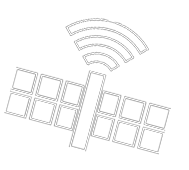- Capacity development
EXIST - Extension for R&D infrastructure using remote Sensing Techniques for environmental studies
PN II 76/2007
EXIST - was dedicated to an intensive and extensive development of LAST - 4D Monitoring Laboratory Using Integrating Remote Sensing Techniques., which is part of INOE. Due to this project have been procured some of the laser remote sensing department like: a multi- channel Lidar which can be used for retrieval of aerosol optical and microphysical parameters; a lidar system for tropospheric ozone concentrations and other complementary instruments for ground based calibration procedures.
The main objective of this project was to increase the research and development capacity and to stimulate innovation by modernization of the existing labs to work in the networks and implement European tactics
The project had three specific objectives: research infrastructure development for environmental studies using laser remote sensing techniques; to increase technical and scientific performances and to extend the applicability of the results and to increase the level of trust and visibility of LAST being achieved all of them.
LAST - 4D Monitoring Laboratory Using Integrating Remote Sensing Techniques
RENAR 249/2006
LAST - had as main objective the development of a four dimensional measurements mobile laboratory using remote sensing techniques. This laboratory is using high tech equipment for ground based measurements of pollutants: standardized point monitors; an open path based system that can determine pollutants such as SO2, NO2, NO, O3, VOC using the UV absorption; light detection and ranging based systems that can profile the aerosol optical properties (LIDAR) and an active remote sensing system that can profile chlorophyll based substances, dissolved organic matter in shallow waters and surface oil traces (Fluorescence LIDAR).
The main objectives of this project was the development of a four dimensional - measurement laboratory for environmental purposes using remote sensing techniques: by acquiring high performance systems and technologies for this kind of investigations and by training our researchers and the second objective was the introduction of new optical remote sensing techniques for the quality control systems under ISO/IEC 17025:2005 in the purpose of setting new standards recognized by the EU.
REMARKT - Strengthening institutional capacity of National R&D Infrastructure using remote Sensing Techniques for environmental studies
75 CP / II/2007
REMARKT was a project which put together two totally different fields: atmospheric physics and economy aiming to satisfy society needs through research. The general objective of the project was to increase the institutional capacity of INOE to better respond to market needs and both local and national authorities, to prepare itself to better participate in EU programmes and initiatives (especially those dedicated to research) by setting up a management and marketing office, by identification of future research directions of and to offer a new dimension for studies of environmental protection area.
The specific objectives were: to improve INOE capacity to identify market needs (including those of local and national authorities) on the scientific and technological service offer and to exploit research results and technological portfolio already achieved ; to increase INOE capacity to identify society problems on air pollutants that a affecting population health; to increase management capacity of INOE to write and manage scientific and demonstration projects in EU programmes and initiatives by setting up a marketing and management office. Its staff will receive appropriate training in marketing management and Intellectually property rights; to increase national and international visibility of INOE, regarding its capacity to offer LIDAR data and especially their expertise by organising and participating to a series of scientific and commercial events both national and international and to Identify future development directions of remote sensing technologies for drafting pollution maps and their effects on human health.
All these objectives have been completed by employing and training two people at INOE; identification of opportunities and recesses in which INOE can perform in the future; identification development leading directions of the field and especially of opportunities that could appear for INOE as research institution, through the foresight study; a closer collaboration between interested economical agents and the local and national authorities involved in this field, through the foresight study; printed and video materials of promoting remote sensing techniques, supporting increasing science-society dialog.
